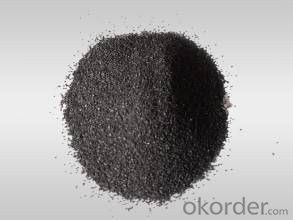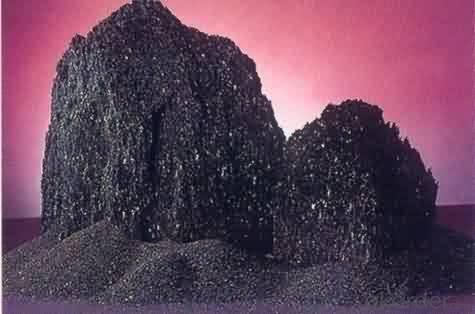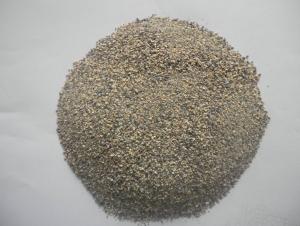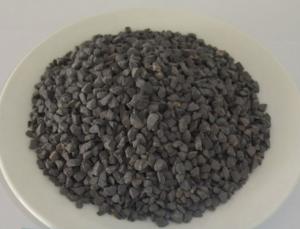Raw Materials for Refractory - Silicon Carbide/SiC for Chemical Industry (Abrasive and Refractory Materials)
- Loading Port:
- Tianjin
- Payment Terms:
- TT OR LC
- Min Order Qty:
- 25 m.t.
- Supply Capability:
- 3000 m.t./month
OKorder Service Pledge
OKorder Financial Service
You Might Also Like
Silicon Carbide/SiC for Chemical Industry(Abrasive and refractory materials)
1.Structure of Silicon Carbide Description
Black Silicon Carbide is produced with high temperature in a electric resistant furnace from a mixture of quartz sand and petroleum coke.
Black silicon carbide is typically used for working on cast iron ,non-ferrous metals, stone, leather, rubber, and other materials which requires sharp cutting characteristics. The mineral is also used widely as a refractory material and metallurgical additive.
2.Main Features of the Calcined Bauxite
Its hardness is between that of fused alumina and synthetic diamond and mechancial intensity of it is also greater than that of fused alumina. It is brittle and very sharp and has a certain degree of electrical and heat conductivity.
3.Main usage of the Calcined Bauxite
1.Grinding non-ferrous materials, rock, stone, leather, rubber, finishing tough and hard materials
2.Bonded abrasive tools, lapping and polishing
3.Widely used as a metallurgical additive and refractory material
4.Refractory
4. Calcined Bauxite Images


5. Calcined Bauxite Specification
Grit Size | SiC | FC | Fe2O3 |
F12-F90 | 98.50 | <0.20 | 0.60 |
F100-F150 | 98.50 | <0.30 | 0.80 |
F180-F220 | 97.00 | <0.30 | 1.20 |
F230-F400 | 96.00 | <0.40 | 1.20 |
F500-F800 | 95.00 | <0.40 | 1.20 |
F1000-F1200 | 93.00 | <0.50 | 1.20 |
P12-P90 | 98.50 | <0.20 | 0.60 |
P100-P150 | 98.00 | <0.30 | 0.80 |
P180-P220 | 97.00 | <0.30 | 1.20 |
P230-P500 | 96.00 | <0.40 | 1.20 |
P600-P1500 | 95.00 | <0.40 | 1.20 |
P2000-P2500 | 93.00 | <0.50 | 1.20 |
6.FAQ of Calcined Bauxite
1). Q: Are you a factory or trading company?
A: We are a factory.
2). Q: Where is your factory located? How can I visit there?
A: Our factory is located in Ningxia, China. You are warmly welcomed to visit us!
3). Q: How can I get some samples?
A: Please contact me for samples
- Q: What brands are the best in the A-level refractory materials?
- These brands are good.
- Q: What are the applications of refractory in petroleum?
- It can be used in chemical filler.
- Q: What's the function of aluminium dihydrogen phosphate on the refractories?
- Mainly used for binder of high-temperature furnace refractory. Characteristics of liquid aluminum dihydrogen phosphate, castable. solid used for refractory spraying coating, chamotte, ceramic construction, which has high break resistance after being dried in 350-500 ° C, phosphate bricks. Characteristics of the solid aluminum dihydrogen phosphate, binding agent used for castable and casting industry: together with the refractory aggregate, ramming mixes at room temperature: Easy to mix, crush resistance, hydration resistance, chamotte, will not become soft even if soaked or boiling in water, molding. Liquid use refractory spraying coating, mainly used for corundum, chrome corundum water gap in refractory industry. The production of chrome aluminum zirconium corundum brick for water-coal-slurry gasifier is especially suitable for site construction applications mainly used for the electrical industry, high-temperature kiln and furnace, hardener, after mixing between 90-110 ° C for 4-24 hours at a constant temperature, forming strong bonding strength, electrical insulation, heat treatment resistance furnace
- Q: Is the ball mill used in production of refractories?
- It depends on what refractory you produce.
- Q: who knows how to classify the fire resistant levels of fireproofing material?
- Materials used in construction are called construction materials. The combustion performance of construction materials refers to all physic and chemical changes happened when burning or contacting fire, the properity is measured by combustibility of material surface and flame transmission, heating, smoke,charring, weightlessness, and the producing of toxicity resultant. Our national standard GB8624-97 classifies the combustion performance of construction materials into following several levels. Class A: Incombustible building material, class B1: Nonflammable building material, class B2: Combustible?building?materials, class B3: Inflammability construction materials, generally speaking: first fire resistant level construction is the mixed construction of reinforced concrete structure or brick wall and steel concrete structure; second fire resistant level construction is the steel structure roof truss, reinforced concrete column or mixed structure made by brick wall; third fire resistant level construction is the wood and brick made by wooden roof and brick wall; fourth fire resistant level one is the combustible?structure made by wooden roof, hard-comnustible component wall.
- Q: What's the material of electrical fire prevention board?
- Industrial electrical fire prevention board is mainly aimed at fire protection and thermal insulation. Iron plate is electrically conductive with good thermal conductivity, which will cause the result that the equipment is not insulated and suffers larger superheating surface! ! ! !
- Q: What's the difference of fire-resistant material's density, specific gravity and bulk specific gravity?
- It usually used to test lightweight refractory. Density can be divided into apparent density (usually called as density) and true density: apparent density includes blow hole inside the sample; Unit weight is using quality to divide volume of sample and specific weight is used to represent liquid.
- Q: Which kind of external wall fire barrier zone material is better?
- I recommended foam cement and particulate thermal insulation composite waterproof material, which is fire isolation area product, which uses surface of vertical?plate arranged fiber technology to make the compressive?strength in the vertical direction up to above 80KPa. At the same time, under the conditions of both exterior heat insulation and effects of humiture in the long-term, it can still maintain the non-aging performance of various aspects, and safety (reliability), fire resistance and excellent durability.
- Q: What's the frequently used refractory material?
- Refractory material is generally used in industrial departments like metallurgy, glass, cement, ceramics, machinery, hot working, petrochemical industry, power and national defense. Frequently used common refractory: silica?brick, semi-silica brick, clay brick, high alumina brick, magnesia brick, etc. Frequently used special refractory: AZS brick, corundum brick, direct-bonded?magnesia-chrome?bricks, carborundum brick, calcium oxide, chromium hemitrioxide, alumina, magnesium oxide, etc. Frequently used fireclay insulating refractory: diatomite product, asbestos product, insulation?board, etc. Frequently used unshaped refractory: ramming refractory, refractory castable, plastic refractory, refractory mortar, gun-mix refractory, refractory coating, lightweight refractory?castables, etc.
- Q: Why should graphitic refractory materials be used now that graphite can burn?
- Materials for refractory must have the following characteristics and properties: 1, high stability: Anti-oxidation, anti-reduction, thermal decomposition; 2, high melting point : 2800℃; 3, low price. Graphite has all three characteristics and properties, especially melting point and stability.
Send your message to us
Raw Materials for Refractory - Silicon Carbide/SiC for Chemical Industry (Abrasive and Refractory Materials)
- Loading Port:
- Tianjin
- Payment Terms:
- TT OR LC
- Min Order Qty:
- 25 m.t.
- Supply Capability:
- 3000 m.t./month
OKorder Service Pledge
OKorder Financial Service
Similar products
Hot products
Hot Searches
Related keywords


































